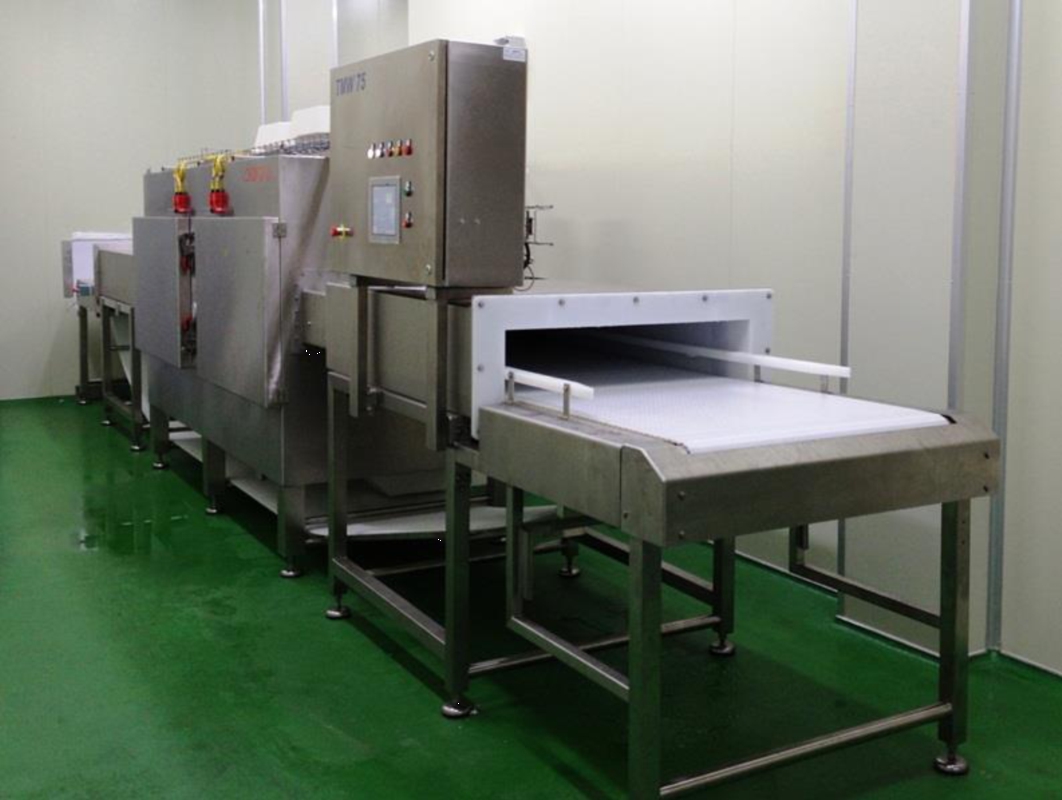The distinctive feature of the TMW 75 is the use of the microwave technology to achieve the best tempering homogeneity while maintaining a good microwave efficiency. The large size of the cavity, the length under microwaves and the crossed coupling of microwaves above and below the blocks are a few examples of the solutions used to conciliate capacity, efficiency and homogeneity.
TMW 75型微波与射频解冻机的最大特点是,通过运用微波技术,快速解冻原料的同时,达到均匀解冻的目的。微波解冻机腔式的大小、有效长度、围绕着原料的区域,对于解冻的效率、均匀性和产能至关重要。
TEMPERING CAPACITIES
产能
The TMW 75 offers a tempering capacity from 2 to 3 t/h from -20 °C to a final average temperature between - 4 °C and - 2 °C in block. Actual capacity may vary due to loading and unloading of the meat, between 1 to 2 t/h.
This capacity is variable and depends on the final required temperature and on the product (meat, fish, vegetables, fruits, butter, etc.). The charts below show these variations.
TMW 75型微波解冻机的能力为从-20 °C到平均温度-4°C/-2°C时约为2-3吨/小时,但是由于装料卸料等原因,实际产能约1-2吨/小时。
产能因最终的温度和原料种类(肉、鱼、蔬菜、水果、黄油,等等)而异。详见下表。
OBSERVATIONS
评价
- If fatty products are to be processed, fat ought to be very homogeneously distributed in the block, otherwise the limit temperature for homogeneity is about -4 °C;
如果原料中有脂肪,则脂肪需要在肉中均匀分布,否则,解冻温度不宜超过-4°C。
- At the final temperature of -4/-2°C the blocks are cold enough to be processed: dicing, flacking, grinding, slicing…
肉类温度为-4°C/-2°C时,即可进行加工:切丁、刨片、绞碎、切片…
- The maximum microwave power which can be used in processing is limited by the products and not the tunnel. Recipes power vs. time must be chosen according to the compromise between capacity and homogeneity of heating.
微波机的加热功率是由加工的原料决定的,不是由长度决定的,而且需要根据产能、均匀度等综合考量。





